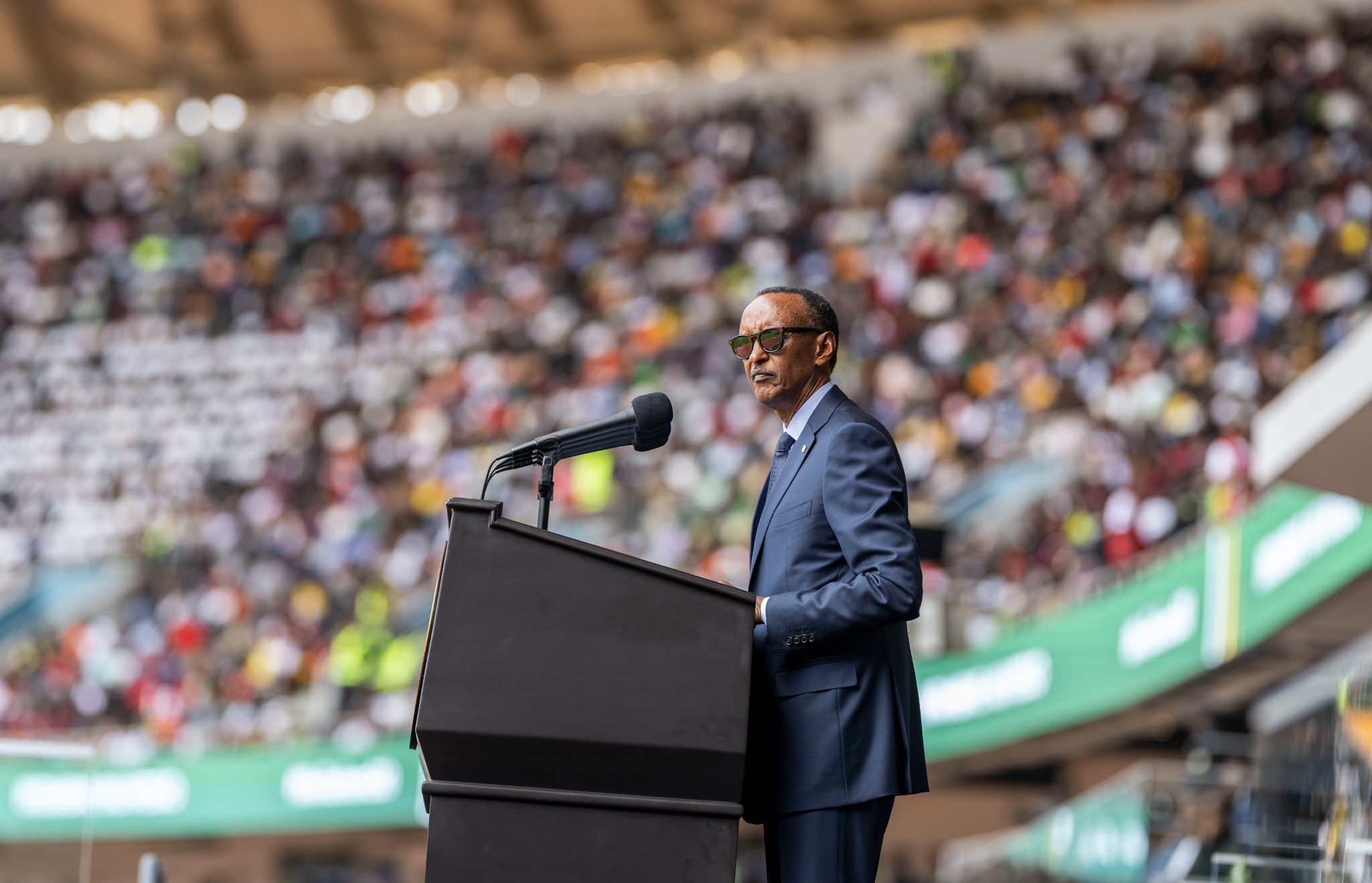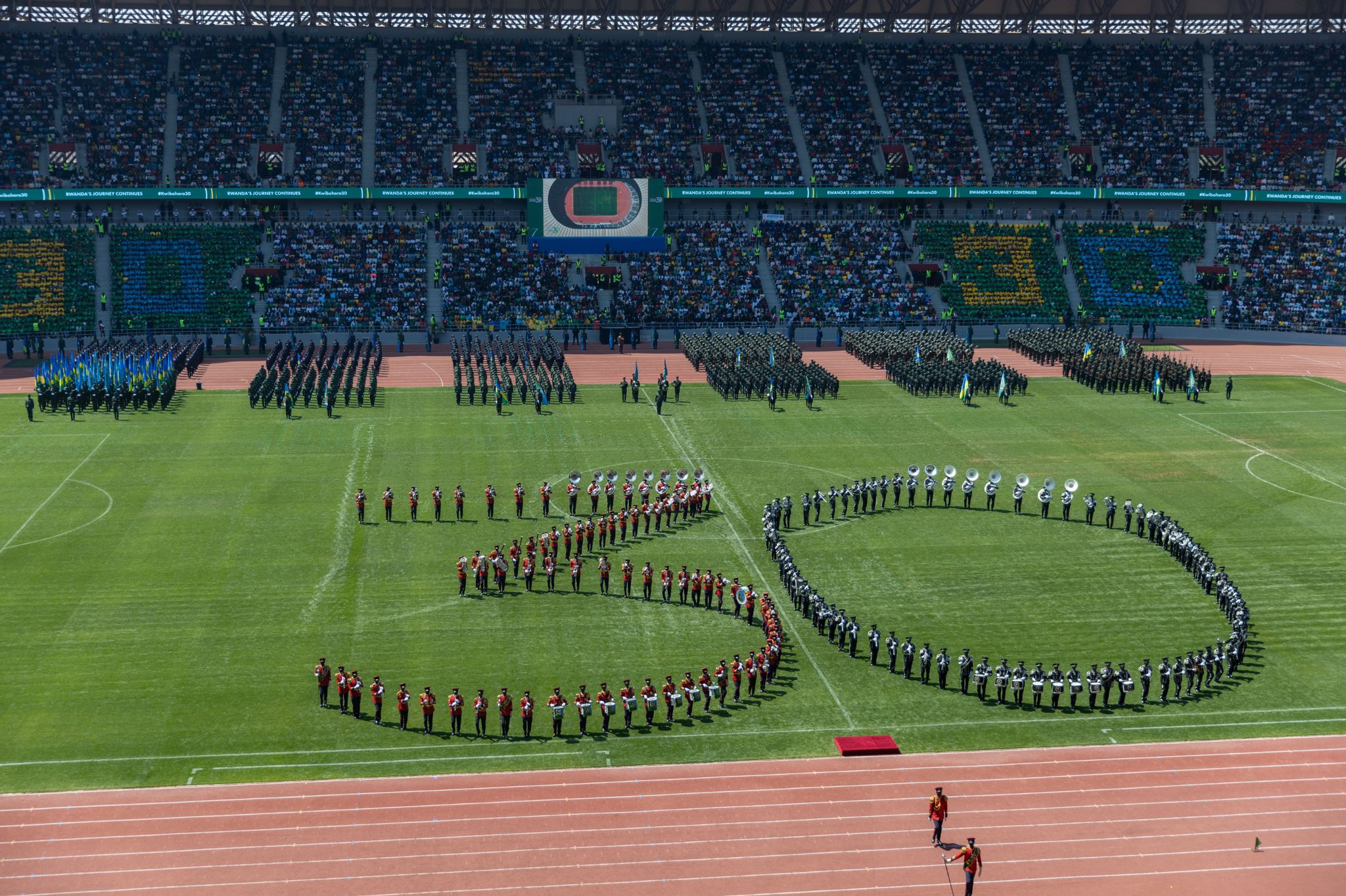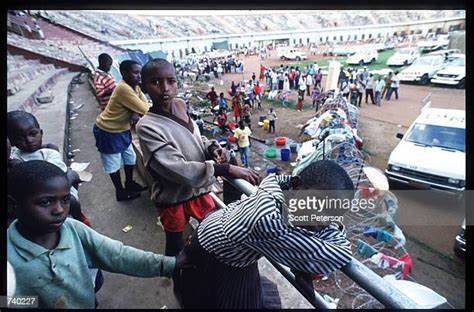
President Paul Kagame at Kwibohora30
Forty-five thousand people, defence and security forces inclusive, today convened at Amahoro stadium from the heart of Capital Kigali to celebrate the 30th anniversary of Rwanda’s liberation, Kwibohora 30.
The stadium was renovated recently to double the number of seats from 25,000, to 45,000, including covering it and putting it to international standards with latest technology.
Inaugurated on July 1, 2024, Amahoro stadium has strong history which was reiterated by President Paul Kagame, the Commander-in Chief of Rwanda Defence Force.
“Three decades ago, this building was the site of refuge and rescue. From the surrounding neighbourhoods, Rwandans flowed here for safety And many were saved, thanks to the Rwandan Patriotic Army, an act that was repeated countless times, all across our country,” Kagame said.
This is in reference to the successful rescue of the Tutsi during the 1994 Genocide against Tutsi from the Stadium.

RDF-RNP music band making Liberation 30 symbol
Genocide survivors from the stadium vicinity told KT Press that after the President Habyarimana’s plane crash on April 6, the genocide started across the city. The RPA soldiers who were at the Rwanda Parliament building to protect politicians that were meant to join the first government of national unity were obliged to go out for rescue operations.
After capturing Remera Military camp which was just at the gate of the stadium, RPA created a corridor which helped scores of Tutsi from Migina, Gihogere, Giporoso, Gishushu and other areas to flee to Amahoro stadium.
At the time, says an eyewitness, there were UN peacekeepers in the stadium. RPA remained vigilant to make sure that there was no threat coming outside by Interahamwe.
This Genocide survivor from Igihogere recalls that his family managed to reach Amahoro stadium before mid-April.
“Those who reached earlier found a place in the buildings of the stadium, but those who managed to come later on, only found a place in the turf which was less secure,” he said.
“There were so much shelling from Kanombe military camp. A couple of people lost their lives from there, but thanks to an alarm system that was installed inside the stadium, many people would take camouflage.

Amahoro stadium 1994
The family of this man in his late thirties stayed in the stadium for several days and was part of score of the Tutsi who walked to Byumba where RPA had a strong base and control of security and could manage some medical arrangements for the injured people.
“That historic night, RPA soldiers came to us and made a clear announcement that they had created a corridor to Byumba and advised that anyone who wanted to walk to that secure place could join,” he recalls.
“Thousands of people who include my family walked the whole night, those who had cars with them took them but were warned never to switch on light. We reached the securer place without Interahamwe managing to see us.”
Pastor Antoine Rutayisire was also at Amahoro stadium, and he remembers one difficult day when the shelling from Kanombe killed more than 30 people and injured many others, which prompted RPA’s decision to take those who were willing to Byumba.
“I remember it was raining when we went out of the stadium. RPA were ingenious in rescue operations. We made a stopover in Kabuye which was captured, and then continued to Byumba ,” recalls Pastor Rutayisire.
“We felt relieved in Byumba. We were given basic needs and understood that RPA would soon capture the country. We were only counting days to return home.
“On July the 4th, we express our thanks to those who liberated Rwanda, and remember those who gave their lives. Our army and security forces are a powerful symbol of unity and safety,” Kagame said in his powerful speech which was in English.
The liberation day which refers to the officla day when Rwanda was liberated from the genocidal government also marks the end of 100 days of genocide commemoration.

